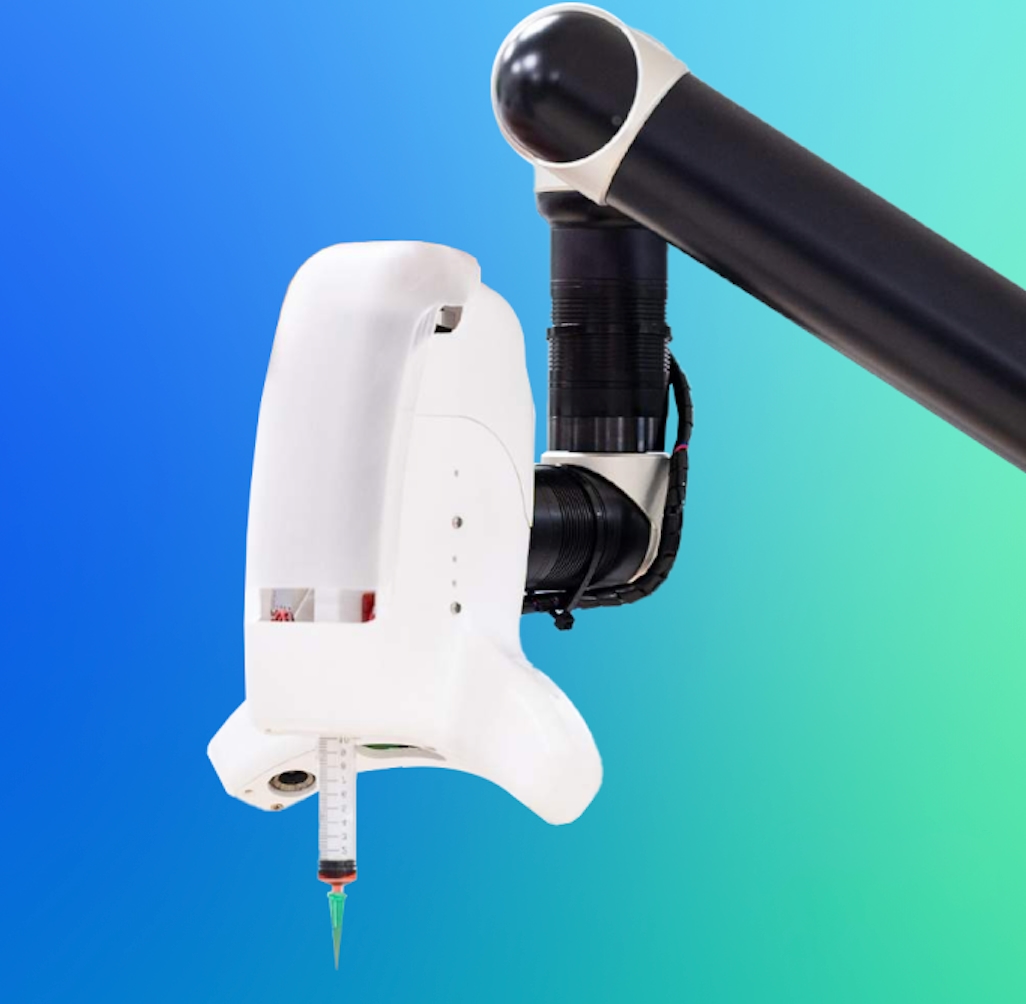Catalog
Search
83 products
View:
- Selected: 1Areas of use
- Selected: 0Item names
- Selected: 0Manufacturer
- Selected: 0Made in
- Selected: 0Additional
View:
83 products

MARK® 01 MK
Cooling, throttling, filtration and regulation of sample flow.
Indication of temperature, pressure and flow of the sample.
Temperature, pressure and cooling water flow indication (optional).
Sample preparation for water-chemical regime monitoring devices
at energy facilities.
Continuous monitoring of sample parameters and data transmission via digital and current outputs.
Maintaining stable sample pressure.
Alarm and automatic shut-off of the sample supply in case of violation of the regime.
Custom temperature and pressure settings for automatic shut
-off of sample supply.
Pulse line purge valve.
Compact stainless steel panel 350*944 mm.
One-way service.
Easy-to-clean collapsible heat exchanger.
VZOR
Nizhny Novgorod
Produced in: Nizhny Novgorod
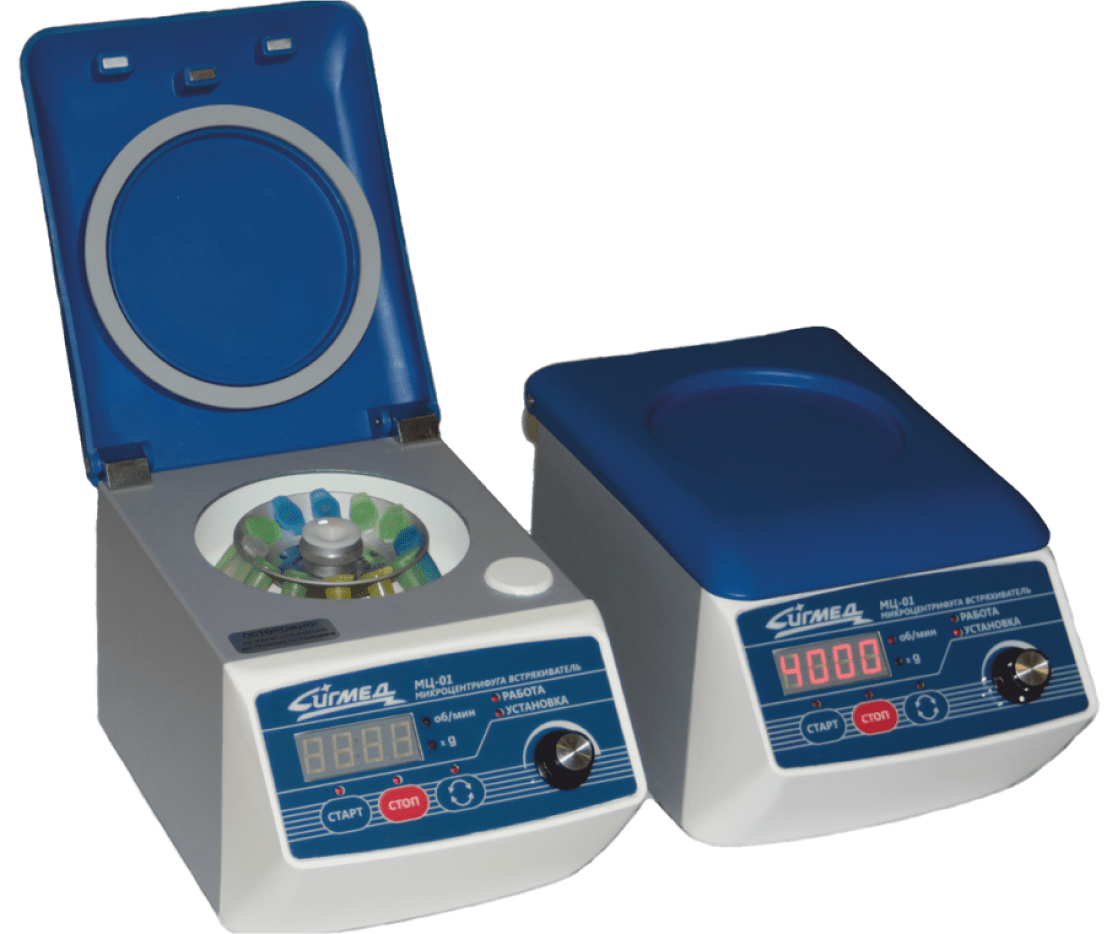
Sigmed MC-01 Microcentrifuge
Functionality
1. Centrifugation function (300 - 4000 rpm).
2. Shaking function (forward-reverse rotation with a frequency of 2 sec.).
3. Mixing in the flask (up to 400 rpm).
4. Mixing in a test tube (500 rpm).
5. Full loading: 12 plastic tubes of the Eppendorf type with a volume of 1.5 ml or 2 ml
Safety
1. Blocking operation when the lid is open.
2. Stops working when opening the lid.
3. Stops working when the mains voltage disappears; it does not restart when the mains voltage appears again.
4. Automatic shutdown after 60 minutes.
5. Low-voltage power supply (+24V).
Ergonomics
1. Simple and intuitive arrangement of controls.
2. RPM or linear g-load are displayed on the readout.
PAO PZ "SIGNAL"
Obninsk
Produced in: Kaluga region, Obninsk
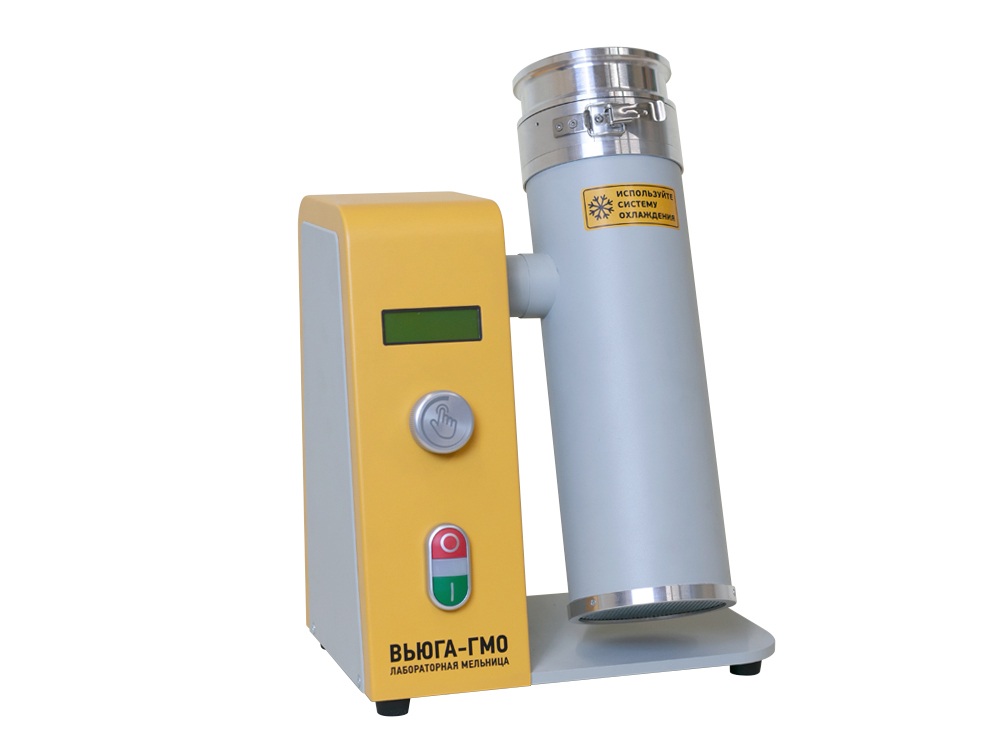
Laboratory mill VYUGA-GMO
1 supp.
GENERAL CHARACTERISTICS:
• Possibility of cleaning and autoclaving of all parts of the grinding set
The grinding chamber of the mill and all parts of the grinding set that come into contact with the sample can be easily removed for cleaning and autoclaving, which is an important condition for sample preparation in the determination of GMOs.
• Minimal heating of the sample during grinding
The special design of the grinding chamber and the use of special knives guarantee minimal heating of the laboratory sample, which eliminates the negative impact on the quality of the extracted DNA. • Grinding with the required quality and homogenization of the sample in one grinding step
The ability to select the optimal combination of blade rotation speed, grinding time and automatic rotation of the grinding unit guarantees high-quality, fast grinding and homogenization of samples for various types of samples.
• Reproducible grinding results
Automation of the grinding process and digital time setting ensure high reproducibility of grinding results. • Easy operation with information display
The mill is easy and convenient to operate. Time and grinding mode are set by one button. The information display will show the grinding process parameters.
• Grinding of samples with high fat content (up to 55%)
The automatic 210° and 90° automatic cycling of the grinding unit, combined with a high grinding speed, minimizes sample heating and oiling of the grinding chamber, which guarantees high-quality, fast grinding and homogenization of samples with a high fat content. 3 grinding chambers are included in the DELIVERY SET of the VYUGA-GMO mill.
By separate order it is possible to purchase the required number of grinding chambers.
GK EKAN
Saint Petersburg
Produced in: Saint Petersburg
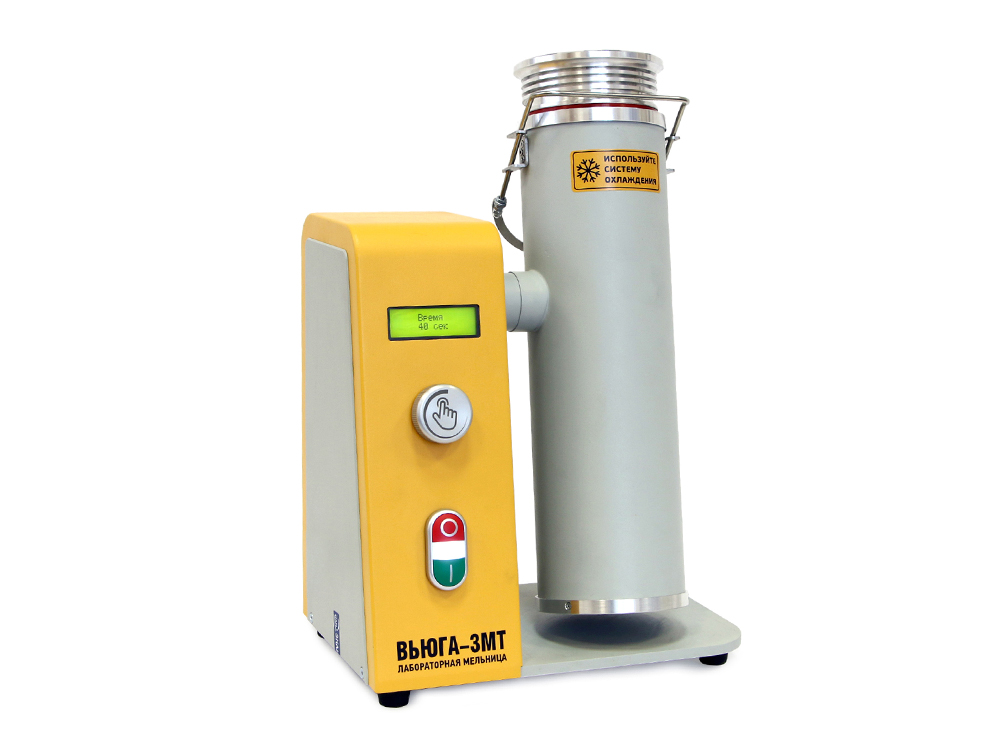
Laboratory mill BLIZZARD 3 MT
1 supp.
The principle of operation of the mill is based on grinding the product with a steel knife rotating at high speed in combination with cyclic rotation of the grinding unit.
FEATURES:
1.Fast and high-quality grinding of solid products
The high power of the electric motor in combination with a specially designed knife of a special shape and automatic cyclic rotation of the grinding unit of the mill at 210 and 90 makes it possible to qualitatively grind samples of solid products in a short time. It is possible to grind lump cake up to 20 mm in size.
2. Sample preparation without heating.
Improved heat dissipation due to the design of the grinding cup, the outer surface of which has the appearance of a radiator, high grinding speed and the possibility of cooling the grinding bowl prevent possible overheating of the sample, which eliminates moisture loss and allows the mill to be used for sample preparation during analysis to determine the moisture content of products.
They are part of the installation of the measuring air-thermal ASESH-8 (RU.C.31.005.A No. 56847).
According to the test results of FSUE "UNIIM", the mills are recommended for sample preparation during the analysis to determine humidity.
3. COOLING SYSTEM without forced water cooling.
For continuous comfortable operation with the cooling system, the mill is equipped with two grinding cups.
4. Quick and easy cleaning of the mill.
A mode for grinding solid products with an improved cleaning system of the grinding chamber has been implemented.
5.Grinding headset with long service life
The grinding set of the mill is specially designed to work in extreme conditions – high productivity and high mechanical load.
Special inserts made of knife-hardened stainless high-strength steel with the effect of forging the grinding chamber and cup ensure long-term operation of the mill when grinding solid and granular products.
The knife made of high-strength stainless knife steel guarantees their high wear resistance.
GK EKAN
Saint Petersburg
Produced in: Saint Petersburg
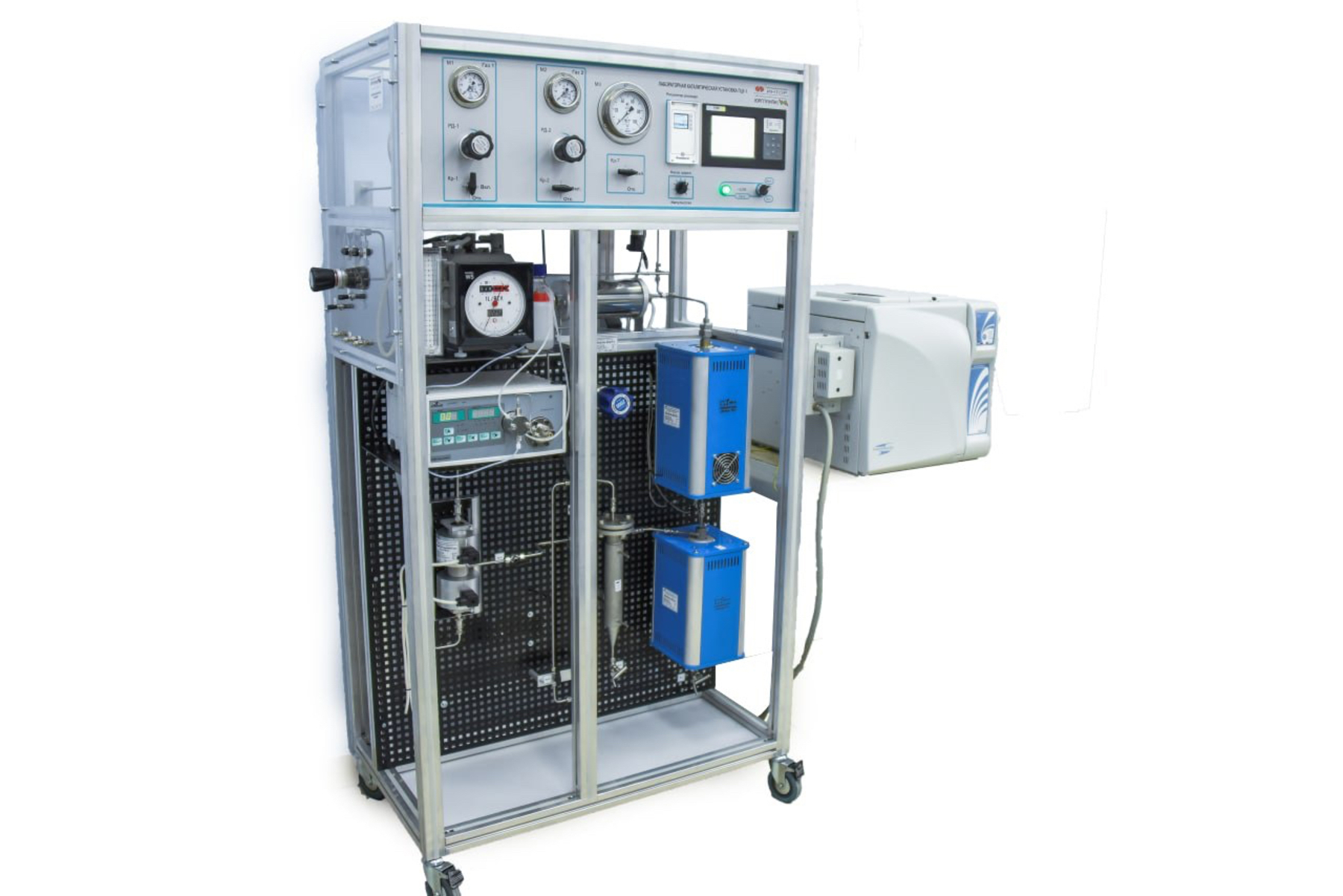
PCU-1 Laboratory catalytic unit
The PCU-1 laboratory catalytic unit is designed to perform the following tasks:
1. Educational and scientific research of chemical processes;
2. Improvement of current industrial processes and development of new ones;
3. Studies of homogeneous and heterogeneous catalysts.
The PCU-1 laboratory catalytic unit is manufactured in accordance with the technical requirements of customers so as to correspond to a wide range of technological parameters. Additionally, embedded equipment is designed to control the flow of raw materials and products, as well as data collection and processing. The unit can be subsequently modernized for new purposes.
Main advantages:
1. A reliable and high-precision system of control and regulation of technological parameters;
2. Easy replacement of catalyst samples;
3. The possibility of conducting long-term tests in continuous mode;
4. The possibility of upgrading the unit for new purposes;
5. The possibility of conducting tests in flow and flow-circulation modes;
6. Control and accurate reproduction.
YURGPU(NPI) FGBOU VO "YURGPU(NPI) IMENI M.I.PLATOVA"
Novocherkassk
Produced in: Rostov region, Novocherkassk

Na-meter MARK® 1002
Measurement of the activity of sodium ions (CNa) and the temperature of aqueous media.
Control of parameters of water-chemical regimes at thermal and nuclear power facilities.Two channels |
Freely programmable measurement ranges.
The possibility of independent measurements at two points of CNa or pNa, temperature.
Convenience and accuracy of measurement, minimum maintenance |
Measurements from 0.01 CNa. The typical error is 6%.
Long intergrading interval (up to 6 months). Automatic thermal compensation.
Automatic dosing device of the alkalizing reagent. No capacity with KCl.
Calibration by one solution | If necessary, three-point calibration is possible.
"Active" sensor unit |
The digital communication channel of the sensor with the converter unit is up to 100 meters.
Communication with external devices | Galvanically isolated current outputs 0-5/4-20/0-20 Ma.
RS 485 port. MODBUS RTU exchange protocol.
Programmable settings of the "dry" contact type.
VZOR
Nizhny Novgorod
Produced in: Nizhny Novgorod
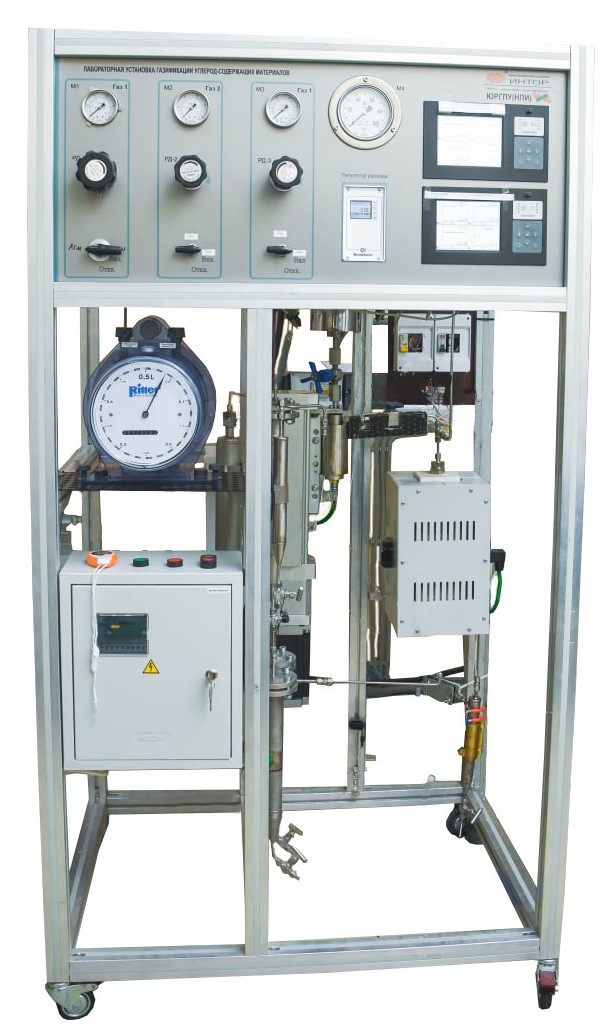
Laboratory hydrocracking/gasification unit
The laboratory unit is designed to study the catalytic and thermal processes of processing heavy petroleum raw materials.
The installation allows you to explore the following processes:
1. Hydrocracking
2. Thermal cracking
3. Gasification of water dispersions of coal, biomass, heavy oil residues.
The high-pressure liquid pump operates at temperatures up to 200°C, which makes it possible to supply high-viscosity components (fuel oil, tar, paraffin, ceresin, etc.) to the reactor.
The laboratory unit is manufactured in accordance with the technical requirements of customers so as to correspond to a wide range of technological parameters. The modular configuration of the unit allows you to change or upgrade it at any time for new tasks.
Main advantages:
1. The possibility of developing and supplying a reactor to meet customer requirements;
2. A wide range of accessories for the supply of liquids/solids;
3. Visual process control;
4. A system of control and regulation of technological parameters;
5. Convenience of loading and unloading of raw materials and reaction products;
6. The possibility of conducting long-term tests in continuous mode;
7. The possibility of upgrading the structure for new purposes;
8. Control and accurate reproduction.
YURGPU(NPI) FGBOU VO "YURGPU(NPI) IMENI M.I.PLATOVA"
Novocherkassk
Produced in: Rostov region, Novocherkassk
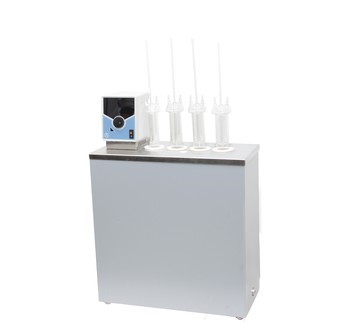
Thermostat for determining oxidative stability LT-830
Design features:
Microprocessor-based PID controller;
Multifunctional control knob;
Minimum temperature gradient over the entire volume of the bath;
Hole for the control thermometer;
Stainless steel bathtub ;
Built-in cooling heat exchanger;
Self-diagnosis system;
A faucet for draining the working fluid.
Technical specifications:
Temperature range, °C
- without external cooling
- with cooling with tap water
(current +10)...+100
(Tvods+5)...+100
Accuracy of temperature maintenance, °C ± 0.1
Number of test places
4
Power consumption from the mains 220 V, W 2200
Volume of working fluid, l 30
Working fluid
- up to 80 °C
- above 80 °C
distilled water
water-glycerin mixture
Overall dimensions (WxDxH), mm 560x250x710
Weight of the device without liquid, kg 25
LOIP
Saint Petersburg
Produced in: Saint Petersburg
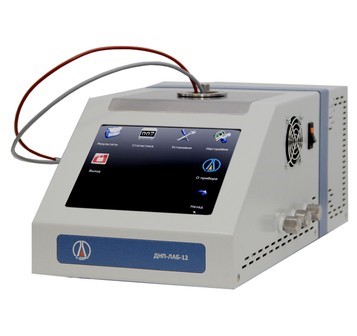
Automatic apparatus for analysis of saturated vapor pressure of liquid petroleum products DNP-LAB-12
Technical specifications:
The volume of the analyzed sample is 5 ml
The volume of the test chamber is 25 ml
Test temperature 37.8°C
Accuracy of maintaining the temperature of the chamber ±0.1 °C
Pressure measurement range
0.01...200 kPa
Pressure measurement accuracy ±0.01 kPa
Gas/liquid ratio 4/1
Power consumption from 220 mains, no more than 150 watts
USB, LAN interface
Overall dimensions, no more
450x230x190 mm
Weight, not more than 15 kg
LOIP
Saint Petersburg
Produced in: Saint Petersburg
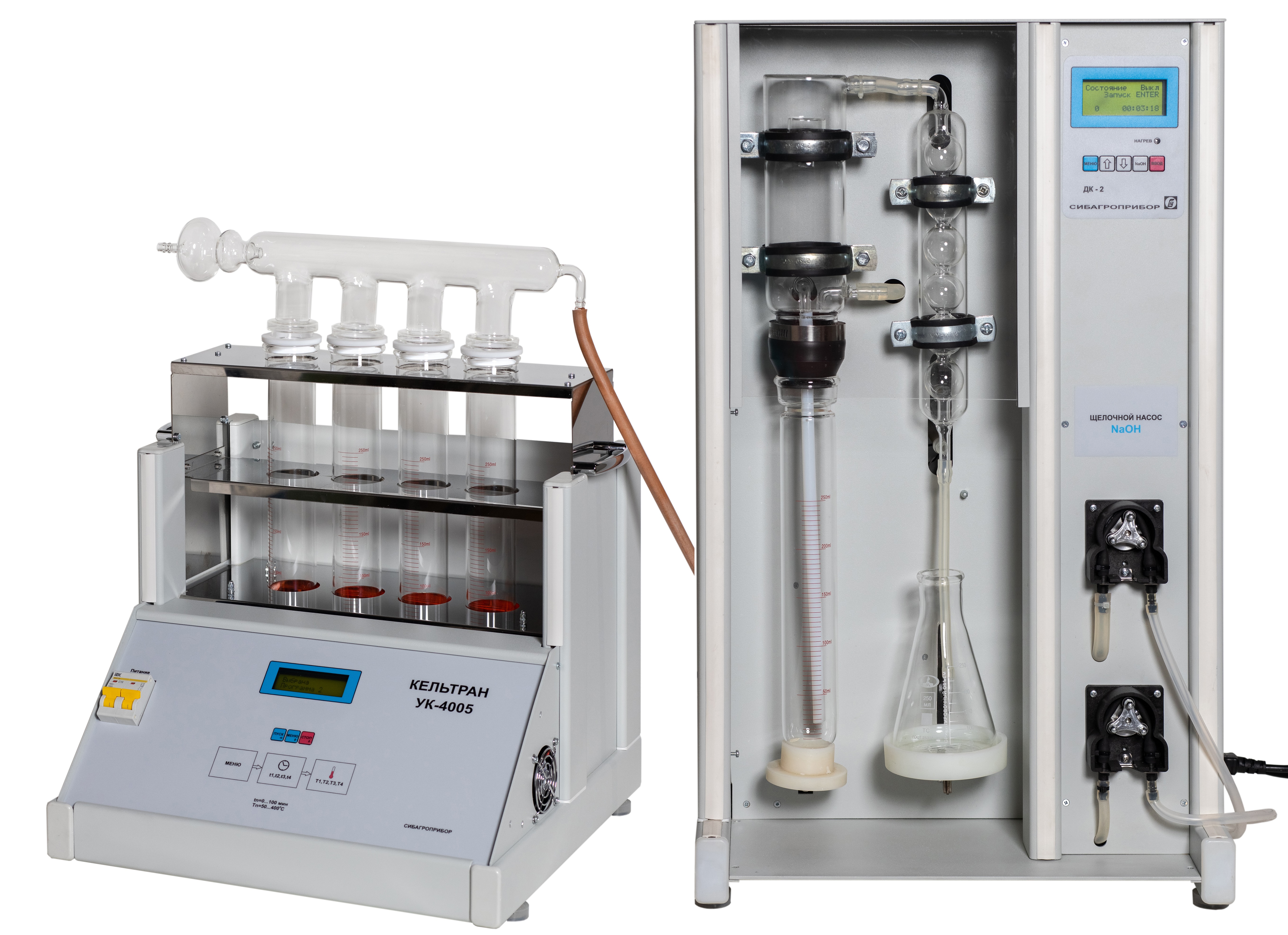
“KELTRUN” unit for the determination of nitrogen and protein mass fraction by Kjeldahl method by Sibagropribor
from
437 000 ₽
The Kjeldahl method is one of the most accurate methods for determining nitrogen and protein in a wide group of products, but, unfortunately, it has a number of significant drawbacks - these are low speed, a large number of possible losses during the analysis, bulky equipment, and the use of aggressive reagents. Sibagropribor Holding presents KELTRUN (KELTRUN) - a set of equipment for carrying out a complete analytical cycle according to the Kjeldahl method, which will allow: • to increase the speed of analyzes (high speed of distillation and ashing, simultaneous processing of several samples); • ensure the safety of personnel (high quality of reaction vessels, effective absorption of acid vapors by the exhaust system, additional protection of personnel in emergency situations); • reduce possible losses in the analysis process; • improve the reproducibility of results. «KELTRAN» (KELTRUN) will allow you to determine nitrogen / protein in the widest list of substances: • food products: dairy, cereals, meat, cereals, etc.; • feed and compound feed; • fertilizers; • water, drinks, beer; • soil, bottom sediments, sediment samples, activated sludge; • crude oil, lubricants; • various chemicals; • alcohol content in wines, musts and spirits; • etc. The set of equipment «KELTRAN» (KELTRUN) allows you to analyze according to GOST and determine the nitrogen content in the range of 0.02 - 99.00%. Composition of the complex «KELTRAN» (KELTRUN): - Digestor; - Distiller; - Scrubber (*not included in the price of the complex); - Titration unit: manual, semi-automatic or automatic (*not included in the price of the complex); Warranty - 1 year. Important feature! In many distillers (made in China and others), when used, alkali passes through a valve-type pump, with a low production resource (sometimes the resource is enough for only 3 months). In the distiller of our production, the alkali passes through a RELIABLE PERISTALTIC PUMP, this ensures a long service life of the distiller! Package options Cost (including VAT): Digestor, Distiller, Water jet pump 379,400 rubles; Digestor, Distiller, Water jet pump, Scrubber 434,700 rubles; Digestor, Distiller, Water jet pump, Manual titration unit 396,900 rubles; Digestor, Distiller, Water jet pump, Scrubber, Manual titration unit 452,200 rubles; Digestor, Distiller, Water jet pump, Kit «Titrion-pH» (c2) 605,400 rubles; Digestor, Distiller, Water jet pump, Scrubber, «Titrion-pH» kit (c2) 660,700 rubles.
SIBAGROPRIBOR
Krasnoobsk
Produced in: Novosibirsk region, Krasnoobsk
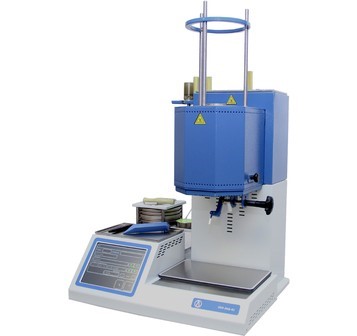
Installation for determining the melt flow index of thermoplastics PTR-LAB-02
Technical specifications:
Melt flow rate for 10 min, g
0,1 - 99,9
The dimensions of the capillary opening, mm
dia. 2,095
diam. 1,048 (optional)
diam. 1,180 (optional)
Set of loads, kg
0,325-5
10-21,6(optional)
Temperature range in the working chamber, °C +50...+450
Accuracy of temperature maintenance, °C:
- in the range of 50...300 °C: ± 0.1
- in the range of 300...350 ° C: ± 0.2
- in the range of 350...450°C: ±0.3
The discreteness of setting the temperature of the chamber, ° C 1
Time to enter the operating mode, no more, min 40
Power supply, V/kW 220/0.8
Installation dimensions, WxDxH mm
513x445x590 (920 –
Maximum height with a fully loaded polymer chamber and a full stack of loads with a handle for their installation)
Installation weight, not more than 70 kg
LOIP
Saint Petersburg
Produced in: Saint Petersburg
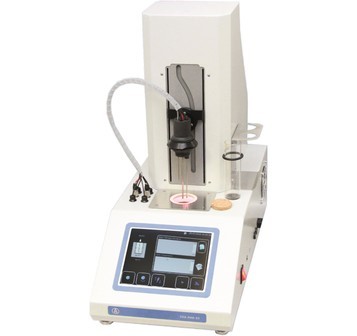
Automatic apparatus for analysis of turbidity/fluidity/solidification temperature of petroleum products TPZ-LAB-22
The parameters of accuracy, convergence and reproducibility are equivalent and correspond to the results obtained in accordance with the methods of ASTM D2500, ASTM D 97, GOST 20287 (methods A and B), GOST 5066 (for the determination of turbidity), GOST 5950, EN 23015, ISO 3015, ISO 3016, IP 15
TPZ-LAB-22 belongs to the latest generation of equipment of JSC "LOIP". The device is designed taking into account all the requirements of the standards for testing. A unique feature of TPZ-LAB-22 is a built–in cooling unit capable of cooling the test cell to -95 °C without the use of external cooling systems. The device automatically sets and maintains the temperature of the cooling bath, conducts tests, creates and stores test reports in memory.
Technical specifications:
The volume of the analyzed sample is 45 ml
The operating temperature range of the test cell is -95...48°C
Accuracy of temperature maintenance ± 0.5 °C
Maintaining the temperature of the cooling bath Integrated cooling system
Built-in memory of at least 1000 protocols
Color LCD display with touch screen
Supply voltage 220 V
Power consumption 500 W
Overall dimensions 300x560x550 mm
Weight 25 kg
LOIP
Saint Petersburg
Produced in: Saint Petersburg
